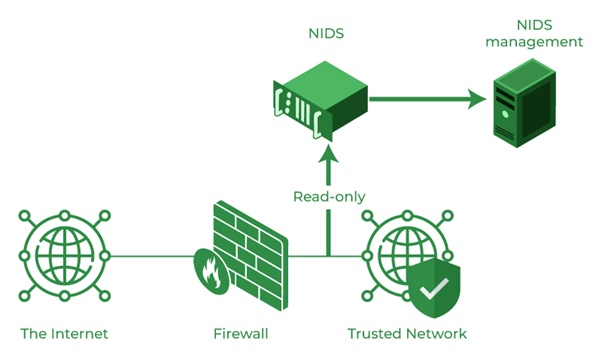Intelligent Intrusion Detection Systems (IIDS) are the next generation of security solutions that leverage advanced technologies like machine learning and artificial intelligence to combat cyber threats. They offer significant advantages over traditional intrusion detection systems (IDS) in terms of:
Enhanced Detection:
- Anomaly-based detection: Identify previously unknown threats by analyzing deviations from established patterns of normal network or system behavior.
- Adaptive learning: Continuously update their understanding of threats and adjust detection models to stay ahead of evolving attack techniques.
- Threat correlation: Analyze data from multiple sources (network traffic, endpoint logs, etc.) to identify broader attack campaigns and uncover hidden connections.
Improved Efficiency:
- Reduced false positives: Minimize resource consumption and investigation time by accurately differentiating between malicious and legitimate activities.
- Automated response: Trigger pre-configured actions (e.g., blocking suspicious IP addresses, isolating infected devices) to contain threats automatically.
- Scalability: Handle large volumes of data and complex network environments effectively.
Here are some key components of IIDS:
- Data collection and pre-processing: Gather data from various sources, clean and format it for analysis.
- Feature engineering: Extract relevant features from the data that are indicative of potential threats.
- Machine learning models: Train and deploy models to identify anomalous behavior and classify it as malicious or benign.
- Decision engine: Analyze alerts and determine the appropriate response based on severity and context.
- Incident management: Integrate with security workflows to automate actions and facilitate investigation.
Examples of IIDS applications:
- Protecting critical infrastructure: Power grids, financial institutions, government agencies.
- Securing cloud and virtualized environments: Data centers, SaaS applications.
- Safeguarding endpoint devices: Laptops, desktops, mobile phones.
Current challenges and future directions:
- Data privacy concerns: Balancing threat detection with data security and user privacy.
- Explainability and transparency: Improving understanding of how AI models make decisions.
- Integration with existing security infrastructure: Ensuring seamless collaboration with other security tools.


